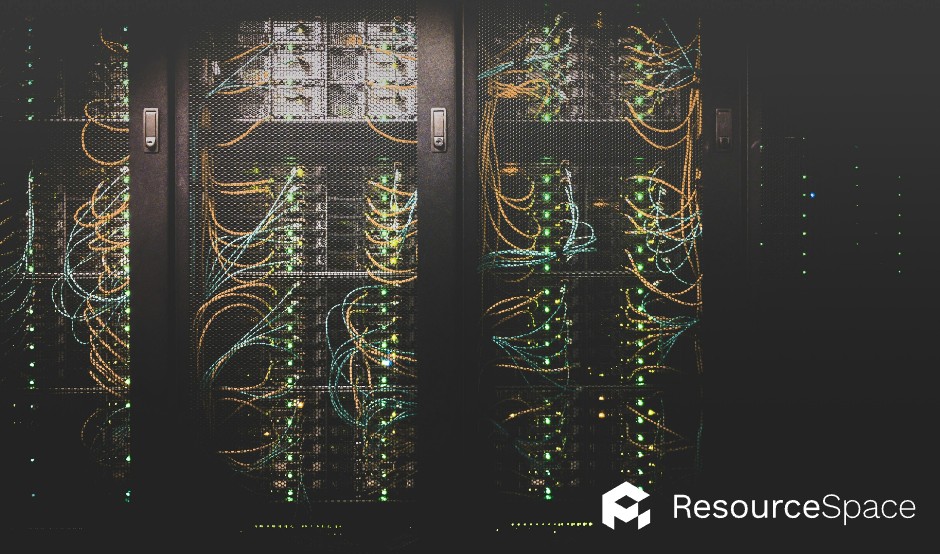
Fairtrade communications staff around the world really appreciate ResourceSpace. It's proven invaluable as a one-stop for sharing and storing all our images and brand assets. I don't know how we'd manage without it!
Blog
29th February 2024

It doesn’t seem long ago that all software was considered ‘on-premise’. From Microsoft Word and Adobe Photoshop to organisation-wide solutions like antivirus and Digital Asset Management, everything had to be installed and maintained on local servers. Ongoing support might have been provided as part of the software license, but an organisation’s IT team was responsible for managing it.
However, the Software-as-a-Service (SaaS) model has changed the software landscape completely.
Increasing internet speeds has meant software can be hosted in the cloud and accessed via a browser, without any requirement to install it locally. The SaaS model offers a number of benefits, including alleviating pressure on internal IT resources while also making it easier to scale as businesses grow.
And this trend is no different in the DAM market, where SaaS DAM platforms have seen 20% growth each year compared to a stagnant on-premise DAM market.
So the question is, in the age of SaaS and cloud computing, is on-premise DAM dead?
READ MORE: Digital asset management hosting options
Although ‘on-premise’ typically refers to a Digital Asset Management system installed on an organisation’s owned IT network, there’s a distinction to be drawn between a custom built DAM and an on-premise solution that continues to be supported by the vendor.
A custom built, static system is configured to meet an organisation's specific requirements. The high level of customisation required makes them expensive to build, and they don't necessarily come with ongoing support of bug fixes. In these instances, the internal IT or DAM team will be responsible for managing the system.
By contrast, a DAM might still be considered on-premise even if the vendor continues to provide support. The benefit of this is that you'll receive ongoing updates and improvements to the system, as well as training for DAM users.
Not all DAM vendors will even offer on-premise as an option, instead only providing their DAM as a SaaS product.
Whether or not the days of on-premise DAM are numbered will come down to the benefits it can offer compared with cloud DAM. Let’s take a look at some of the factors you should be considering.
| Functionality |
Custom-built on-premise DAM |
Supported on-premise DAM |
Cloud DAM |
| Onboarding & configuration |  |
 |
 |
| User training |  |
 |
 |
| Bug fixes | |
 |
 |
| Feature development | |
 |
 |
| Scalability |  |
 |
 |
| Cybersecurity | |
|
 |
| Disaster recovery | |
|
 |
| Data backups | |
|
 |
Regardless of how your DAM is hosted, the vendor (assuming you’re not building the system entirely in-house) should be providing full support with initial onboarding and configuration. The difference for custom-built DAMs is that the amount and duration of this initial support will depend on what has been agreed with the vendor. With supported on-premise and cloud hosted DAM this will be much less restricted.
Vendors of custom-built DAMs may also offer user training, but this isn’t guaranteed. Again, training should be offered as standard with supported on-premise and cloud DAM.
When it comes to ongoing user training, for example for new employees, it’s unlikely you’ll have access to this with a custom-built system. You might have an option to purchase support hours from the vendor, but because they won’t be involved in the development of your DAM over time they might not be best placed to offer this anyway.
The level of support on offer with a supported on-premise DAM really depends on the specific vendor, but ResourceSpace’s On Premise and On Premise Enterprise packages offer ongoing support, including software upgrades, system configuration, bug fixes, training and consultancy.
However, cloud DAM users will benefit from much faster implementation of bug fixes and software improvements. After all, the vendor manages the servers where the DAM is hosted, allowing them to roll out changes to all of their customers simultaneously.
Note that custom-built systems almost certainly won’t include this, and you’ll be responsible for all fixes and improvements you want to make.
When it comes to scalability, cloud DAM is clearly the winner.
If you need to scale up an on-premise DAM you need to buy new hardware. This isn’t only a slower process, but it’s also harder to scale down if necessary. Organisations running on-premise DAM systems will often have to invest in more server space than they need to ensure they can grow into it.
By contrast, cloud storage can be increased or decreased on-the-fly depending on what you need, although be aware that some vendors might lock you into a contract that isn’t so flexible.
There’s a common misconception that on-premise software is more secure than cloud software. However, unless your organisation boasts an expert team of security professionals this probably isn’t the case. SaaS vendors will often have superior cybersecurity tools and processes in place compared to an organisation whose main focus isn’t data security.
It’s also likely that a DAM vendor with a SaaS offering will have data centres with security that far surpasses that of individual organisations.
Purchasing and installing an on-premise DAM independently will likely incur a flat fee to a vendor, which can make an on-premise DAM more expensive than a cloud DAM. There are also many other costs associated with on-premise you need to consider:
READ MORE: Is it time to migrate your on-premise DAM to the Cloud?
Organisations that still want their DAM hosted on-premise might be doing so because of misconceptions around cybersecurity, control over their data or any number of fears surrounding the idea of ‘the cloud’.
However, one genuine issue for some businesses and institutions is compliance with data sovereignty regulations, particularly in industries that handle highly sensitive data, such as healthcare or financial institutions.
Data sovereignty is the concept that digital data is subject to the laws of the country in which it’s collected, and this is where the international data transfers associated with SaaS and cloud solutions can be problematic.
For example, under the EU’s General Data Protection Regulations (GDPR), personal data can only be transferred outside of the EU under two circumstances:
The challenge for organisations subject to EU GDPR or similar regulations is knowing whether or not a SaaS vendor will transfer data to countries that aren’t considered ‘safe’. If you’re unsure whether cloud DAM would be compliant for your industry, get in touch with our expert team today.
Here at ResourceSpace we don’t necessarily think that on-premise DAM is dead, but we're no longer offering this solution to our new customers for the reasons we've outlined in this blog. We think that a cloud hosted DAM solution is often the best option for many different organisations thanks to the scalability, performance and simplicity on offer.
Want to see for yourself how a ResourceSpace cloud instance might benefit you? Launch your free DAM system below within minutes.
#SaaS
#CloudComputing
#OnPremiseDAM
#IndustryNews
#Cybersecurity
#Scalability
#BestPractice
#ResourceSpaceTips
#SoftwareAsAService
#BusinessGrowth